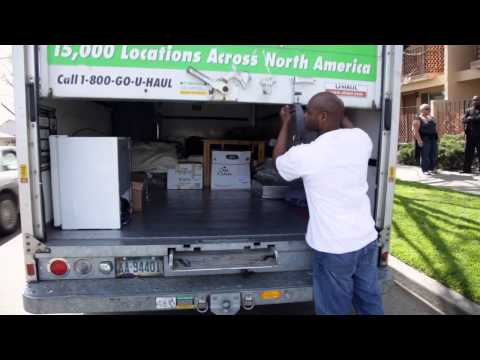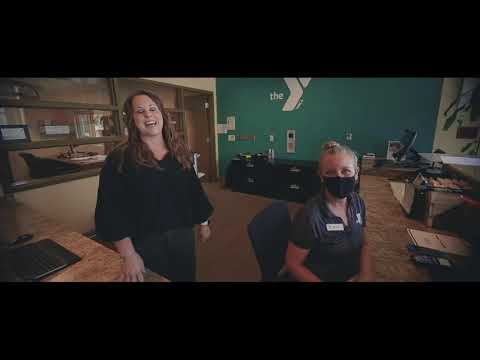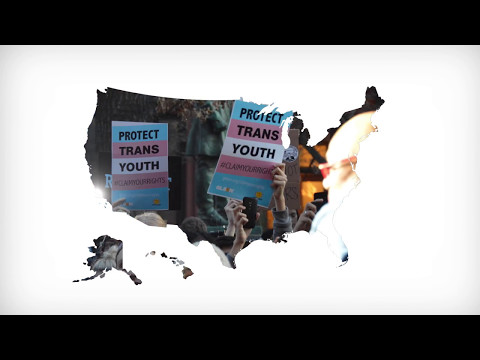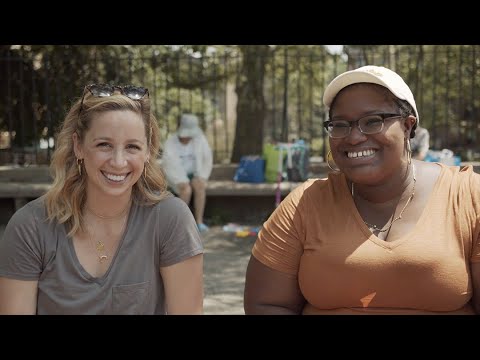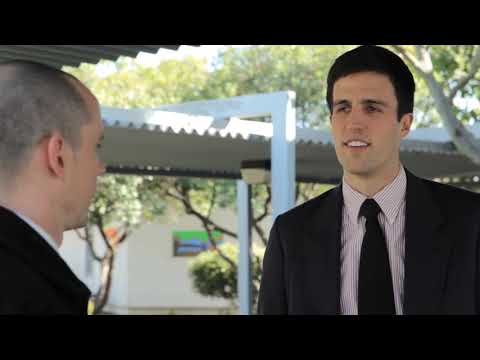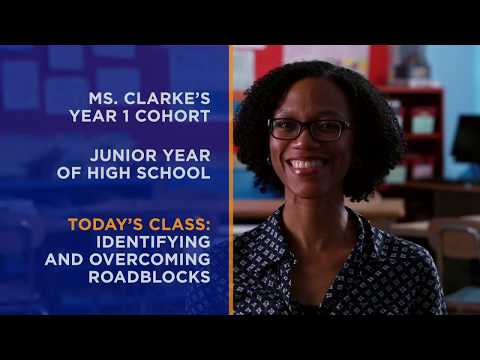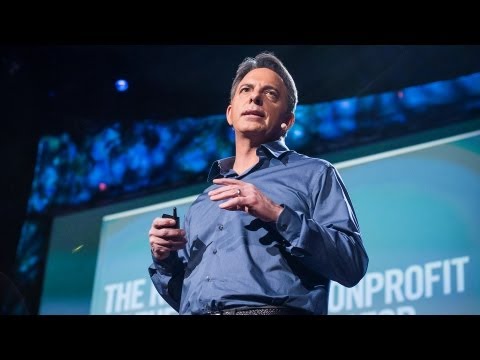9 Best Charities to Help Disadvantaged Youth (Complete 2024 List)
Impactful Ninja is reader-supported. When you buy through links on our site, we may earn an affiliate commission.
Learn more
Learn more
.
Hey fellow impactful ninja ? You may have noticed that Impactful Ninja is all about providing helpful information to make a positive impact on the world and society. And that we love to link back to where we found all the information for each of our posts. Most of these links are informational-based for you to check out their primary sources with one click. But some of these links are so-called "affiliate links" to products that we recommend. First and foremost, because we believe that they add value to you. For example, when we wrote a post about the environmental impact of long showers, we came across an EPA recommendation to use WaterSense showerheads. So we linked to where you can find them. Or, for many of our posts, we also link to our favorite books on that topic so that you can get a much more holistic overview than one single blog post could provide. And when there is an affiliate program for these products, we sign up for it. For example, as Amazon Associates, we earn from qualifying purchases. First, and most importantly, we still only recommend products that we believe add value for you. When you buy something through one of our affiliate links, we may earn a small commission - but at no additional costs to you. And when you buy something through a link that is not an affiliate link, we won’t receive any commission but we’ll still be happy to have helped you. When we find products that we believe add value to you and the seller has an affiliate program, we sign up for it. When you buy something through one of our affiliate links, we may earn a small commission (at no extra costs to you). And at this point in time, all money is reinvested in sharing the most helpful content with you. This includes all operating costs for running this site and the content creation itself. You may have noticed by the way Impactful Ninja is operated that money is not the driving factor behind it. It is a passion project of mine and I love to share helpful information with you to make a positive impact on the world and society. However, it's a project in that I invest a lot of time and also quite some money. Eventually, my dream is to one day turn this passion project into my full-time job and provide even more helpful information. But that's still a long time to go. Stay impactful,Affiliate Disclosure
Why do we add these product links?
What do these affiliate links mean for you?
What do these affiliate links mean for us?
What does this mean for me personally?
![]()
Nearly 11 million children live below the poverty line in America. When they reach adolescence, only 10% of them graduate, compared to 50% of youth from high-income families. Youth of color and members of the LGBTQ community are also often disadvantaged when it comes to accessing vital opportunities. However, charities are working hard to give these youths the chance they deserve. So we had to ask: what are the best charities to help disadvantaged youth?
The best charities to help disadvantaged youth are First Place For Youth and the YMCA. Charities such as iMentor and QuestBridge do amazing work helping these young people transition from High School to college so they can achieve their dreams.
Here’s What All the Best Charities to Help Disadvantaged Youth Have in Common
The charities on this list were chosen based on their mission, impact and transparency ratings, and achievements.
They operate across North and Central America, providing disadvantaged youth with the skills and support they need to succeed in life.
Many of the charities on this list focus their efforts on providing job education and guidance to disadvantaged youths so they can enter the world of work and achieve their dreams. Others focus their attention on getting young people off the streets by providing shelter, as well as mental health and substance abuse counseling.
Yet, they all share the same goal: to ensure that every young person has access to equal opportunities so they can live their best lives.
These Are the 9 Best Charities to Help Disadvantaged Youth in 2024
Below are our favorite charities to help disadvantaged youth (you can click on their link to directly jump to their section in this article):
Best Charities to Help Disadvantaged Youth
(At the end of this article we’ll also share our six-step approach on how you can select the best charity to support.)
First Place For Youth: More Is Possible

🔎
Their transparency & ratings:
First Place For Youth holds the Platinum Seal of Transparency from GuideStar. The charity also has a 100% Encompass rating for finance & accountability from Charity Navigator.
“To help foster youth build the skills they need to make a successful transition to self-sufficiency and responsible adulthood.”
First Place For Youth
⚒️
What they do:
First Place For Youth supports young adults in their transition from foster care to adulthood. They do this by running regular Independent Living Skills Programs where youths can receive access to community resources, as well as education and career advice. First Place For Youth also runs My First Place which provides young people with rent-free housing in shared apartments for the duration of their involvement in the charity’s educational and healthy living programs.
🚀
What they’ve achieved:
92% of the students that enrolled in First Place For Youth’s programs earned or progressed towards a High School Diploma. Of these, 84% enrolled in Post-secondary programs. In addition, 96% of their students maintained stable housing after leaving the charity’s support services. In 2020, the charity served 1,583 vulnerable young people and provided rent-free homes for 677.
✨
Ways to contribute:
You can donate directly to First Place For Youth through their website. You can also support the charity by joining the Friends of First Place program or by becoming a Sustainer.
YMCA: Empowering Vulnerable Youths
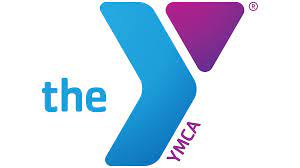
🔎
Their transparency & ratings:
The YMCA holds the Platinum Seal of Transparency from GuideStar. The charity also has a 100% Encompass rating for finance & accountability from Charity Navigator.
“Dedicated to giving people of all ages, backgrounds, and walks of life the opportunity to reach their full potential with dignity.”
YMCA
⚒️
What they do:
The YMCA runs several programs, services, and initiatives that empower young people to realize their potential and prepare themselves for the world of work. Through their Achievers Program, the charity provides mentorship and support to black and Latino teens so they can raise their academic inspiration. Their Youth-Led Solutions Initiative is a global effort that aims to amplify the voices of disadvantaged youths in sustainability, development, and equality issues.
🚀
What they’ve achieved:
Since their founding, the YMCA has served over 64 million people across 120 countries, including over 9 million young people. Teens that have engaged in YMCA community services are 50% less likely to engage in risky behaviors and 27% more likely to find stable employment. There are now 2,700 YMCA establishments serving 10,000 communities across all 50 states in America.
✨
Ways to contribute:
You can donate directly to the YMCA through their website. You can also support the charity by volunteering or by participating in one of their Community programs.
Covenant House: Providing Vital Support to Homeless Youths

🔎
Their transparency & ratings:
Covenant House holds the Platinum Seal of Transparency from GuideStar and a 3-star rating from Charity Navigator.
“Providing housing and supportive services to youth facing homelessness and putting them on a path to independence.”
Covenant House
⚒️
What they do:
Covenant House provides safe housing to homeless youths across America. Throughout the duration of their stay, these young people are offered educational programs, job training and placement, mental health and substance abuse counseling, and legal aid through their Continuum of Care initiative. For homeless youths that are unable to access their services, the charity runs a mobile support service to deliver blankets, food, and on-the-spot assistance.
🚀
What they’ve achieved:
Since their founding, Covenant House has given over 1.5 million homeless youths a second chance at life. In 2020, the charity reached nearly 50,000 young people across 6 countries, including Guatemala and Mexico. In the same year, they provided 25,000 on-site medical visits, engaged 4,100 youths in their mental health services, and moved 2,900 young people into stable housing.
✨
Ways to contribute:
You can donate directly to Covenant House through their website. You can also support the charity by getting involved in their Sleep Out campaign or by purchasing much–needed items from their Gift Catalog.
Gay, Lesbian, and Straight Education Network: Equal Rights for LGBTQ Youth
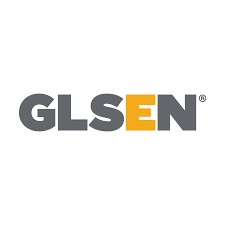
🔎
Their transparency & ratings:
According to their financial report, the Gay, Lesbian, and Straight Network spent 67.2% of their expenditure on charitable programs and 32.6% on support services.
“To ensure that every member of every school community is valued and respected regardless of sexual orientation, gender identity, or gender expression.”
Gay, Lesbian, and Straight Education Network
⚒️
What they do:
The Gay, Lesbian, and Straight Education Network conducts research through their Research Institute and utilizes advocacy tactics to support LGBTQ youth in schools across America. Their GLSEN Safe Space Kits provide vital tools and resources, including updated terminology and inclusive curriculum materials, for educators. They also run numerous nationwide campaigns to raise awareness of the needs of LGBTQ teens, including Day of Silence and No Name-Calling Week. Their Changing the Game program focuses on addressing LGBTQ issues in school athletic and physical education programs.
🚀
What they’ve achieved:
Today, the Gay, Lesbian, and Straight Education Network consists of over 1.5 million people including students, families, and education advocates. More than 500,000 GLSEN resources are downloaded by vulnerable students every year. The charity has been integral to the implementation of the Safe Schools Improvement Act and the Student Non-Discrimination Act. To date, they have fought discriminatory legislation in over 15 states.
✨
Ways to contribute:
You can donate directly to the Gay, Lesbian, and Straight Education Network through their website. You can also support the charity by setting up a fundraising event or by purchasing items from their online store.
QuestBridge: Bridging the Gap Between School and Higher Education

🔎
Their transparency & ratings:
QuestBridge holds the Bronze Seal of Transparency from GuideStar. The charity has yet to be rated by Charity Navigator.
“Designing and building programs for talented low-income students to access and navigate exceptional educational and life opportunities.”
QuestBridge
⚒️
What they do:
QuestBridge connects promising students from low-income backgrounds with leading higher education institutions. They do this through their National College Match initiative, which is a college admission and scholarship process where students can apply to be admitted early with four-year scholarships. They are then guided through the whole process by QuestBridge.
🚀
What they’ve achieved:
Since their founding, QuestBridge has supported over 70,000 students through their programs. In addition, over 27,000 young people and their families have attended the charity’s conferences to kickstart their college admission processes. By 2005, the charity was receiving around 2,000 applicants every year. They now collaborate with 48 college partners across America.
✨
Ways to contribute:
You can donate directly to QuestBridge through their website. If you are an educator, you can also refer a student to the charity or you can sign up to their mailing list to receive all the latest updates.
360 Youth Services: Changing Lives. Inspiring Hope

🔎
Their transparency & ratings:
First Place For Youth holds the Platinum Seal of Transparency from GuideStar. The charity also has a 99% Encompass rating for finance & accountability from Charity Navigator.
“A community where all youth possess the necessary skills to successfully navigate life’s challenges.”
360 Youth Services
⚒️
What they do:
360 Youth Services offer substance use prevention education, counseling, and affordable housing to disadvantaged youths in Naperville and surrounding communities. Through their Snowball initiative, they offer a fun and engaging Youth Leadership Development Program to empower youths to lead drug-free lives. Their Rapid Rehousing program is designed to help young people quickly exit homelessness and enter permanent housing.
🚀
What they’ve achieved:
To date, 360 Youth Services have remained dedicated to providing disadvantaged youths with the tools they need to improve their own lives. In 2021, the charity provided 19,950 nights of housing for homeless youths and provided 6,570 nutritious meals. In the same year, they ran 5,718 counseling sessions and reached 47,149 youths with their substance abuse programs.
✨
Ways to contribute:
You can donate directly to 360 Youth Services through their website. You can also support the charity by volunteering or by getting involved in one of their special events.
iMentor: Every Student Deserves a Champion

🔎
Their transparency & ratings:
iMentor holds the Platinum Seal of Transparency from GuideStar and a 4-star rating from Charity Navigator.
“Building mentoring relationships that empower first-generation students to graduate high school, succeed in college and career, and achieve their ambitions.”
iMentor
⚒️
What they do:
iMentor matches every student in their selected high schools with a committed college-educated mentor, to ensure they achieve the skills and knowledge they need to become college graduates themselves. The charity particularly focus on students from disadvantaged backgrounds and those of color, to prevent discrimination. They implement their programs across New York, Chicago, San Francisco Bay, and Baltimore but they also partner with other like-minded non-profits to outreach even further.
🚀
What they’ve achieved:
To date, iMentor has matched 35,948 students with their own mentors. 74% of their students enroll in college compared to 54% of similar students nationally. In 2020, 97% of the students with an iMentor submitted a college application and 97% of those were accepted. In the same year, 89% of mentees expressed that their relationship with their mentor was very important to them.
✨
Ways to contribute:
You can donate directly to iMentor through their website. You can also support the charity by becoming a Volunteer Mentor or by financially supporting one of their NextGen Leaders.
Equal Opportunity Schools: Improving Enrollment Opportunities

🔎
Their transparency & ratings:
Equal Opportunity Schools holds the Silver Seal of Transparency from GuideStar. The charity also has a 100% Encompass rating for finance & accountability from Charity Navigator.
“To ensure that students of color and low-income students have equitable access to America’s most academically intense high school programs and succeed at the highest levels.”
Equal Opportunity Schools
⚒️
What they do:
Equal Opportunity Schools partners with educational establishments, as well as local and national leaders to reduce racial and low-income discrimination in the college enrollment process. Their Action For Equity program is an inclusive curriculum course that focuses on providing support and professional coaching to disadvantaged students to ensure they achieve the grades and opportunities they deserve. The charity particularly focuses on improving grades and engagement in STEM and computer science courses.
🚀
What they’ve achieved:
To date, Equal Opportunity Schools has collaborated with over 700 schools in 220 districts across 30 states to enroll 50,000 disadvantaged students in high school and college courses. Partner schools have had a 27% increase in the number of passing grades among historically underrepresented student groups.
✨
Ways to contribute:
You can donate directly to Equal Opportunity Schools through their website. If you run a school, you can also support the charity by enrolling your establishment in their Equal Opportunity School Program.
OneGoal: There’s Brilliance in Every One of Us

🔎
Their transparency & ratings:
OneGoal holds the Gold Seal of Transparency from GuideStar and a 4-star rating from Charity Navigator.
“We believe in the brilliance of all students and that a postsecondary education provides the best opportunity for success in an inequitable world.”
OneGoal
⚒️
What they do:
OneGoal collaborates closely with high schools in low-income communities to target and train teachers, so they can successfully teach the OneGoal curriculum as a daily, credit-bearing class. Their program supports students for three years; from junior year of high school to the first year of postgraduate education. It focuses on social-emotional support and blended educational opportunities for the most disadvantaged students, particularly those of color.
🚀
What they’ve achieved:
OneGoal now supports over 13,500 fellows in 113 schools across 6 regions. Approximately 84% of their high school graduates enroll in a postsecondary institution with 75% of those persisting into the second year.
✨
Ways to contribute:
You can donate directly to OneGoal through their website. If you are a teacher you can also support the charity by signing up to be a Program Director or by signing your school up to run OneGoal programs.
How Can You Select the Best Charities to Support?
The charities on the list are, we deem, the best charities to help disadvantaged youth. However, you may have a particular charity you want to support. Let’s look at what you can do to ensure your contribution has the most significant impact.
- Check out the charity website. Charities that are worthy of your donations are transparent in their mission and their figures. Familiarize yourself with their history, mission, and values. Their website usually is the best place to start.
- Identify the charity’s mission. Without a goal, the charity is likely to fail. If the charity’s mission isn’t clear, it’s probably worth looking for a charity that does have a clear mission.
- Check if the charity has measurable goals. An effective charity has clear goals. You want to know your donation will help the charity reach its goals. But if it doesn’t have targets, it’s likely to fail or squander your gift. The charity should be able to account for its spending and supply evidence of the work they do.
- Assess the successes or goals the charity has achieved. You wouldn’t invest in a business if it kept missing its targets. In the same way, charities are like this too. If no one is assessing a charity’s progress in reaching its targets, the chances are they’re not making a substantial positive change.
- Check the charity’s financials and stats. Trustworthy organizations will publish financial statements and reports each year. Some might be exempt from having to do so, but they should be able to provide them to public members who are interested in donating.
- Locate sources who work with or benefit from the charity. Word of mouth and first-hand experience of a charity’s work lets you know the charity’s quality. If you’re able to do so, check out the charity for yourself or speak to someone familiar with it. This way, your donation will go to the right place.
How Can You Best Support These Charities?
After you’ve made your decision, it’s time for you to decide on how you’d like to help the charities you’ve chosen. Check how you can help – each charity runs specific programs that have unique aims. Find out what the aim of such programs is and whether they are right for you.
Here are a few ways you can help your chosen charity:
- Donate money. You can find donation pages on the website of most charities. Your donation can be a one-time payment, or you can set it to be deducted regularly at different intervals. You can mostly pay via credit card, but some charities also take PayPal or Bitcoin payments.
- Buy their official merchandise. The charities can also raise money by selling merchandise. So, you can support them by buying the mugs, shirts, caps, pens, pencils, and any other such items they may be selling. Ideally, you should buy as much as you can to share and spread the word about the charity’s activities.
- Engage in volunteer work. As you’ve seen from our descriptions above, some charities engage in a lot of local and grassroots programs. You can help by taking on and organizing the program in your local area.
- Help their fundraising efforts. You can spread the word about the charity in your workplace, school, church, etc., and hold creative fundraising drives on social media or offline within your small circles.
- Share their stories. Most charities have compelling stories that you can share with your audience to attract more people to the cause.
Final Thoughts
Now it is up to you to select the charity that resonates most with you. And whichever charity you end up choosing and contributing to, we are sure that they will immensely appreciate your support. Hopefully, the information within this article has made this selection process a bit easier for you to support charities dedicated to disadvantaged youth – based on the causes that matter most to you.
Stay impactful,

PS: Finally, I want to leave you with a thought-provoking TED talk from Dan Pallotta, a leading philanthropic activist and fundraiser, about what is wrong with the way we think about charities – and what we can do about it:
Sources
- American Progress: The Basic Facts About Children in Poverty
- Social Solutions: 23 At-Risk Youth Statistics that Prove the Importance of Youth Development
- First Place For Youth: Home page
- GuideStar: First Place For Youth
- Charity Navigator: First Place For Youth
- First Place For Youth: Who We Serve
- First Place For Youth: Independent Living Skills Program
- First Place For Youth: My First Place
- First Place For Youth: 2020 Impact Overview
- First Place For Youth: Donate
- First Place For Youth: Friends of First Place
- First Place For Youth: Sustainers Circle
- YMCA: Home page
- GuideStar: YMCA
- Charity Navigator: YMCA
- YMCA: Supporting Young People
- YMCA: Education & Leadership
- YMCA: Our Global Reach
- YMCA: Who We Are
- YMCA: National Impact Report
- YMCA: 2019 Annual Report
- YMCA: Donate
- YMCA: Volunteer
- YMCA: Participate in a Program
- Covenant House: Home page
- Covenant House: Homeless Shelters
- GuideStar: Covenant House
- Charity Navigator: Covenant House
- Covenant House: Programs and Services
- Covenant House: Physical and Mental Health
- Covenant House: Justice System Involvement
- Covenant House: Continuum of Care
- Covenant House: Street and Van Outreach
- Covenant House: 2020 Annual Report
- Covenant House: Donate
- Covenant House: Sleep Out
- Covenant House: Gift Catalog
- Gay, Lesbian, and Straight Education Network: Home page
- Gay, Lesbian, and Straight Education Network: Financial Statements 2020-21
- Gay, Lesbian, and Straight Education Network: Research
- Gay, Lesbian, and Straight Education Network: Programs
- Gay, Lesbian, and Straight Education Network: Day of Silence
- Gay, Lesbian, and Straight Education Network: No Name-Calling Week
- Gay, Lesbian, and Straight Education Network: About Us
- Human Rights Campaign: Safe Schools Improvement Act
- Gay, Lesbian, and Straight Education Network: Student Non-Discrimination Act
- Gay, Lesbian, and Straight Education Network: Donate
- Just Giving: Gay, Lesbian, and Straight Education Network
- Gay, Lesbian, and Straight Education Network: Shop to Support
- QuestBridge: Home page
- GuideStar: QuestBridge
- QuestBridge: Mission & Vision
- QuestBridge: College Partners
- QuestBridge: How does the National College Match work?
- QuestBridge: Who should apply?
- QuestBridge: Our Impact
- QuestBridge: History
- QuestBridge: Donate
- QuestBridge: Refer a Student
- QuestBridge: Job Opportunities
- 360 Youth Services: Home page
- GuideStar: 360 Youth Services
- Charity Navigator: 360 Youth Services
- 360 Youth Services: Prevention Programs
- 360 Youth Services: Counseling
- 360 Youth Services: Housing
- 360 Youth Services: Operation Snowball
- 360 Youth Services: Donate
- 360 Youth Services: Get Involved
- 360 Youth Services: Special Events
- iMentor: Home page
- GuideStar: iMentor
- Charity Navigator: iMentor
- iMentor: Our Model
- iMentor: Our Equity Work
- iMentor: Our Reach
- iMentor: Results
- iMentor: 2020 Impact Result
- iMentor: Donate
- iMentor: Become a Volunteer Mentor
- iMentor: Support Our NextGen Leaders
- Equal Opportunity Schools: Home page
- GuideStar: Equal Opportunity Schools
- Charity Navigator: Equal Opportunity Schools
- Equal Opportunity Schools: Approach
- Equal Opportunity Schools: Action For Equity
- Equal Opportunity Schools: Rising STEM Scholars Initiative
- Equal Opportunity Schools: Geographic Reach
- Equal Opportunity Schools: Action For Equity Overview
- Equal Opportunity Schools: Donate
- Equal Opportunity Schools: Partner With Us
- OneGoal: Home page
- GuideStar: OneGoal
- Charity Navigator: OneGoal
- OneGoal: The College Process
- OneGoal: One of a Kind Program
- OneGoal: A Three-Year Program
- OneGoal: OneGoal Fits Your ESSER Plan
- OneGoal: Our Fellows
- OneGoal: Press
- OneGoal: Impact + Results
- OneGoal: Donate
- OneGoal: Become a Program Director
- OneGoal: Bring OneGoal to Your School
